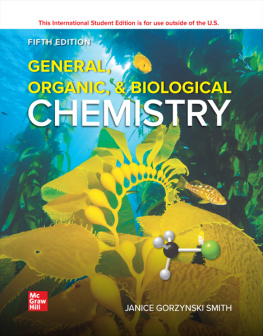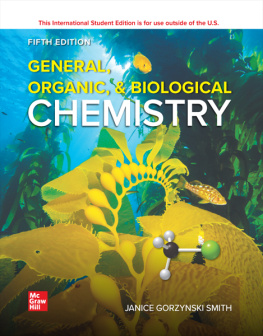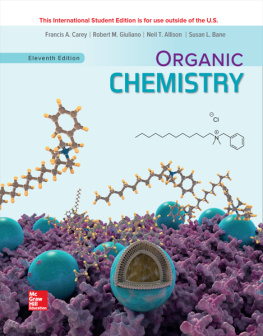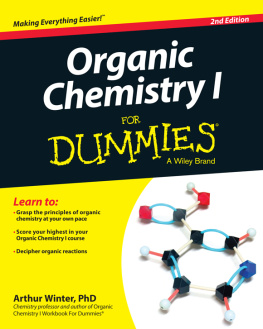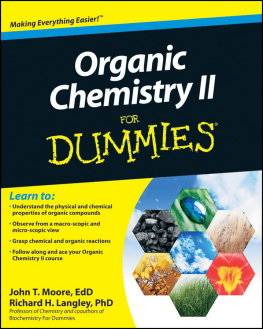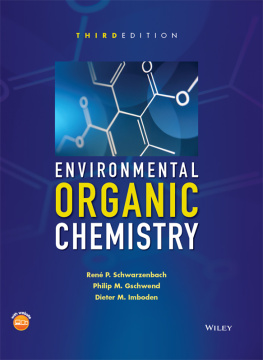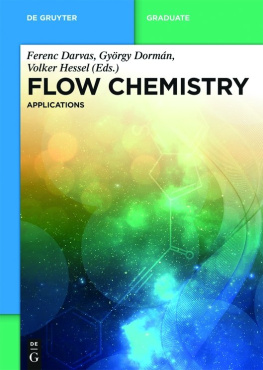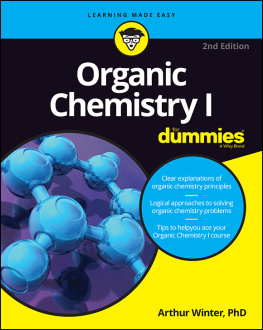Yang - Deuterium: Discovery and Applications in Organic Chemistry
Here you can read online Yang - Deuterium: Discovery and Applications in Organic Chemistry full text of the book (entire story) in english for free. Download pdf and epub, get meaning, cover and reviews about this ebook. year: 2016, publisher: Elsevier, genre: Romance novel. Description of the work, (preface) as well as reviews are available. Best literature library LitArk.com created for fans of good reading and offers a wide selection of genres:
Romance novel
Science fiction
Adventure
Detective
Science
History
Home and family
Prose
Art
Politics
Computer
Non-fiction
Religion
Business
Children
Humor
Choose a favorite category and find really read worthwhile books. Enjoy immersion in the world of imagination, feel the emotions of the characters or learn something new for yourself, make an fascinating discovery.

- Book:Deuterium: Discovery and Applications in Organic Chemistry
- Author:
- Publisher:Elsevier
- Genre:
- Year:2016
- Rating:5 / 5
- Favourites:Add to favourites
- Your mark:
- 100
- 1
- 2
- 3
- 4
- 5
Deuterium: Discovery and Applications in Organic Chemistry: summary, description and annotation
We offer to read an annotation, description, summary or preface (depends on what the author of the book "Deuterium: Discovery and Applications in Organic Chemistry" wrote himself). If you haven't found the necessary information about the book — write in the comments, we will try to find it.
Yang: author's other books
Who wrote Deuterium: Discovery and Applications in Organic Chemistry? Find out the surname, the name of the author of the book and a list of all author's works by series.
Deuterium: Discovery and Applications in Organic Chemistry — read online for free the complete book (whole text) full work
Below is the text of the book, divided by pages. System saving the place of the last page read, allows you to conveniently read the book "Deuterium: Discovery and Applications in Organic Chemistry" online for free, without having to search again every time where you left off. Put a bookmark, and you can go to the page where you finished reading at any time.
Font size:
Interval:
Bookmark:
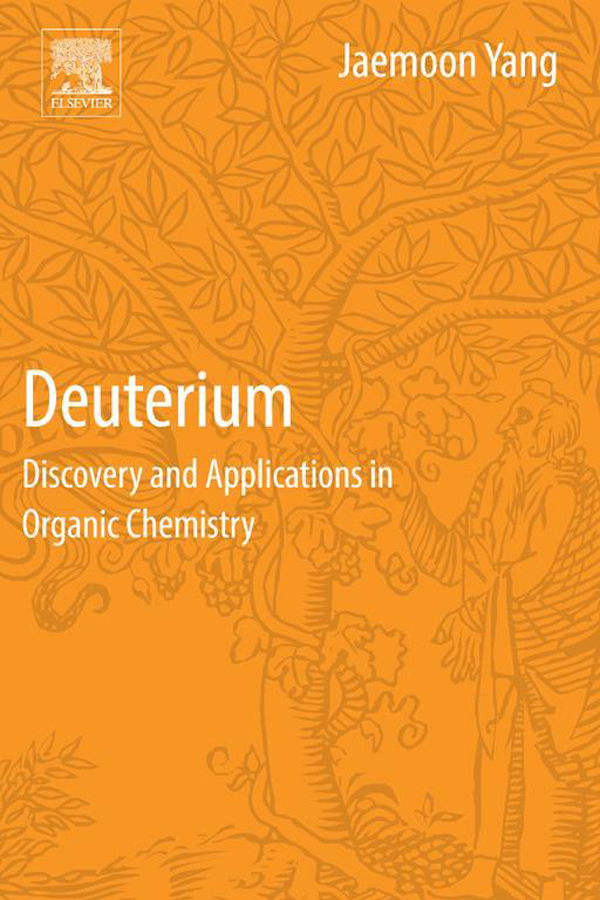
- Tables in Chapter 1
- Tables in Chapter 2
- Tables in Chapter 3
- Tables in Chapter 4
- Tables in Chapter 5
- Figures in Introduction
- Figures in Chapter 2
- Figures in Chapter 3
- Figures in Chapter 4
- Figures in Chapter 5
- Figures in Conclusion
Jaemoon Yang

Elsevier
Radarweg 29, PO Box 211, 1000 AE Amsterdam, Netherlands
The Boulevard, Langford Lane, Kidlington, Oxford OX5 1GB, UK
50 Hampshire Street, 5th Floor, Cambridge, MA 02139, USA
Copyright 2016 Elsevier Inc. All rights reserved.
No part of this publication may be reproduced or transmitted in any form or by any means, electronic or mechanical, including photocopying, recording, or any information storage and retrieval system, without permission in writing from the publisher. Details on how to seek permission, further information about the Publishers permissions policies and our arrangements with organizations such as the Copyright Clearance Center and the Copyright Licensing Agency, can be found at our website: www.elsevier.com/permissions.
This book and the individual contributions contained in it are protected under copyright by the Publisher (other than as may be noted herein).
Notices
Knowledge and best practice in this field are constantly changing. As new research and experience broaden our understanding, changes in research methods, professional practices, or medical treatment may become necessary.
Practitioners and researchers must always rely on their own experience and knowledge in evaluating and using any information, methods, compounds, or experiments described herein. In using such information or methods they should be mindful of their own safety and the safety of others, including parties for whom they have a professional responsibility.
To the fullest extent of the law, neither the Publisher nor the authors, contributors, or editors, assume any liability for any injury and/or damage to persons or property as a matter of products liability, negligence or otherwise, or from any use or operation of any methods, products, instructions, or ideas contained in the material herein.
British Library Cataloguing-in-Publication Data
A catalogue record for this book is available from the British Library
Library of Congress Cataloging-in-Publication Data
A catalog record for this book is available from the Library of Congress
ISBN: 978-0-12-811040-9
For Information on all Elsevier publications visit our website at http://www.elsevier.com/

Publisher: John Fedor
Acquisition Editor: Katey Birtcher
Editorial Project Manager: Jill Cetel
Production Project Manager: Anitha Sivaraj
Designer: MPS
Typeset by MPS Limited, Chennai, India
To Urey and those who follow.
Jaemoon Yang, Ph.D., Cambridge Isotope Laboratories, Inc. Andover, MA
In the preparation of this book, I have received a great deal of assistance from many people. Without them this book would not have been possible.
I am pleased to acknowledge help from Professor Michael Krische of The University of Texas at Austin and Professor Takahiko Akiyama of Gakushuin University in Japan, who provided me with additional information on their research.
I would like to express my sincere appreciation to the following individuals at Cambridge Isotope Laboratories, Inc. (CIL): Dr. Joel Bradley instilled a great value of deuterium in me. Dr. William Wood encouraged me to explore a wonderful world of deuterium. Dr. Richard Titmas read the entire manuscript and made valuable suggestions. Mrs. Diane Gallerani obtained a number of rare articles in a timely manner. My colleagues at CIL, Drs. Sun-Shine Yuan, Susan Henke, Steven Torkelson, and Salim Barkallah, are gratefully acknowledged for their proofreading efforts and helpful comments.
I wish to thank the Elsevier publishing team for making the manuscript become a book. Katey Birtcher, senior acquisitions editor of chemistry, kindly accepted the book proposal and arranged a very smooth review process. Jill Cetel, senior editorial project manager, was instrumental ensuring that the book was ready to print.
Finally, I want to thank my wife, Wenjing Xu, PhD, for her support and love.
April 2016
It is everywhere around us. The water we drink every day is made up of hydrogen and oxygen, the gasoline we pump at the gas station contains hydrogen and carbon, the sugar we use is made of hydrogen, carbon, and oxygen. DNA is another fine example: it has hydrogen as well as other atoms such as carbon, nitrogen, oxygen, and phosphorus. Recently, hydrogen-fueled vehicles are gaining attention as a zero-emission alternative. Being the lightest of all the elements in the Periodic Table, hydrogen is one of the most common atoms that make up the world.
Since its discovery in 1766 by Henry Cavendish, hydrogen had been considered a pure element for more than 160 years. It turned out that hydrogen is not pure! It is very close to being pure, but it is not exactly 100%. The chemical purity of hydrogen is 99.985%. This is because there are two forms or isotopes of hydrogen: the protium accounts for 99.985% of naturally occurring hydrogen and the deuterium makes up the remaining 0.015%. When hydrogen is mentioned, it is usually referred to as protium, the major isotope of hydrogen.
As an isotope of hydrogen, deuterium exhibits the very same chemical properties as protium. On the other hand, deuterium has certain physical properties that are different from those of protium: it is twice as heavy as protium, which makes its bond to carbon or oxygen stronger than those attached to protium. Due to these unique properties, deuterium has been widely used in chemistry, biology, and physics.
The field of organic chemistry has benefited the most from the discovery of deuterium. One familiar example is the use of deuterated solvents such as deuteriochloroform (CDCl3) in nuclear magnetic resonance (NMR) spectroscopy. The proton NMR (1H NMR) spectrum of a sample provides valuable information about the structure of a molecule. In obtaining a proton NMR spectrum, a sample is typically dissolved in deuterated solvents such as deuteriochloroform. Obviously, deuterated solvent is required to clearly observe the signals arising from the analyte by obscuring the signal from the solvent.
Another application is the use of deuterium as a tracer in the study of reaction mechanism. With the use of deuterium-labeled compounds, organic chemists can conveniently follow the molecules to precisely figure out the reaction mechanism. An outstanding example can be found in a research paper published in 2010 by Professor Grubbs and coworkers at the California Institute of Technology. In studying the mechanism of ring-closing metathesis, the authors prepared a deuterium-labeled substrate (
Font size:
Interval:
Bookmark:
Similar books «Deuterium: Discovery and Applications in Organic Chemistry»
Look at similar books to Deuterium: Discovery and Applications in Organic Chemistry. We have selected literature similar in name and meaning in the hope of providing readers with more options to find new, interesting, not yet read works.
Discussion, reviews of the book Deuterium: Discovery and Applications in Organic Chemistry and just readers' own opinions. Leave your comments, write what you think about the work, its meaning or the main characters. Specify what exactly you liked and what you didn't like, and why you think so.




![Yang - The latehomecomer: [a Hmong family memoir]](/uploads/posts/book/165016/thumbs/yang-the-latehomecomer-a-hmong-family-memoir.jpg)


